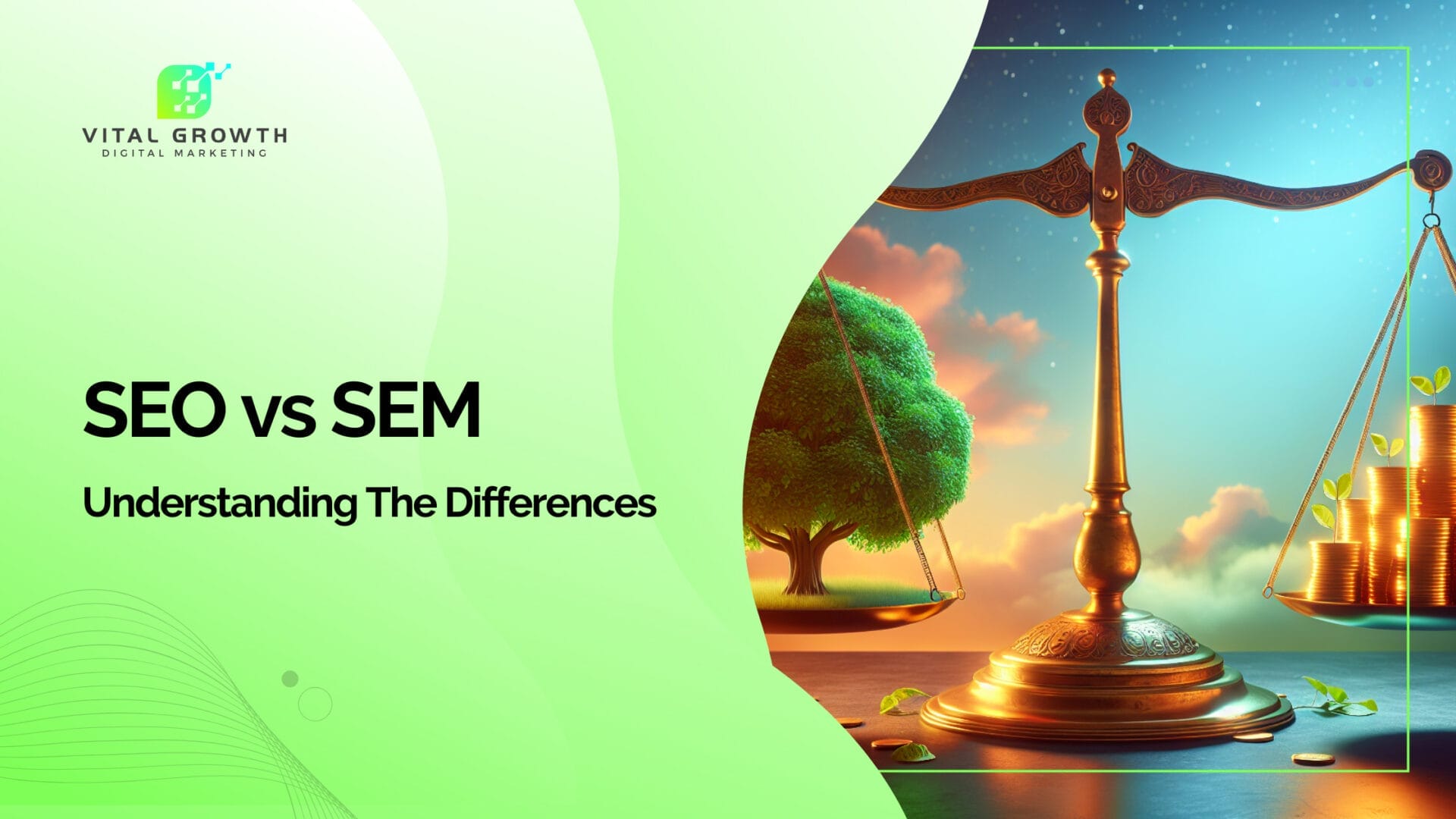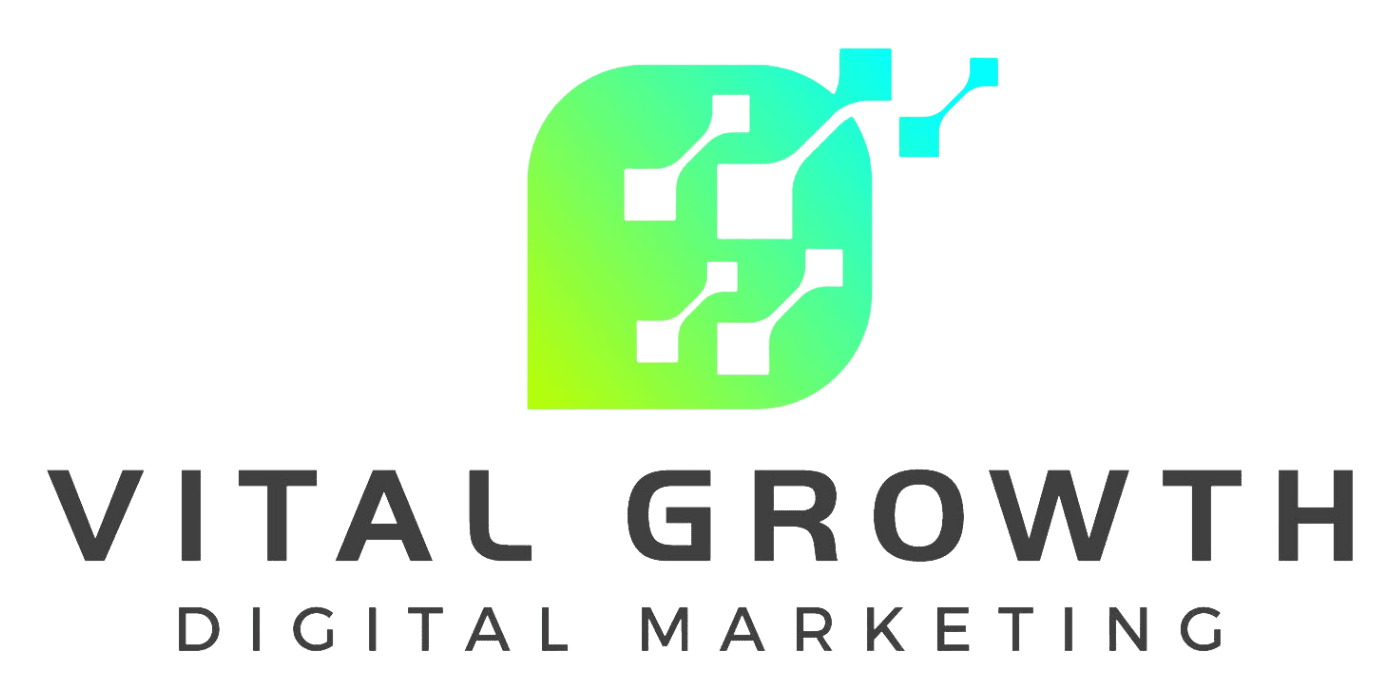When it comes to digital marketing, search engine optimization (SEO) has become an indispensable tool for businesses of all sizes to prove authority and expertise in their niche. With millions of websites trying to get attention, it’s important for businesses to strategically optimize their online presence to stand out and reach their target audience effectively. This is where a well-crafted SEO strategy comes into play.
An effective SEO strategy is a complete plan that encompasses keyword research, technical SEO, on-page optimization, and off-page SEO techniques. Each of these pillars plays a major role in making sure that your content not only reaches the right audience but also resonates with them.
Keyword research helps you understand your target audience’s language, enabling you to tailor your content to their needs and interests. Technical SEO makes sure your website’s seamless functionality, making it easily accessible and navigable for both users and search engines. On-page optimization enhances the visibility of your content in organic search results, while off-page SEO techniques boost your website’s credibility, trustworthiness, and authority.
Together, these four pieces of the puzzle lay the groundwork for a successful SEO strategy, guiding you through the complexities of SEO and making sure your content reaches the right audience. This guide will looks into these pillars, providing you with a complete understanding of each and giving you the knowledge to build an effective SEO strategy.
Key Takeaways
- Create a come SEO strategy before starting implementation, focusing on the four main SEO strategies: keyword research, technical SEO, on-page optimization, and off-page techniques.
- Understand and target your audience’s language, ensure your website’s seamless functionality, enhance your content’s visibility, and boost your website’s credibility.
- Incorporate advanced tactics such as voice search and mobile optimization in your SEO strategy.
- Regularly monitor your SEO performance and make necessary adjustments based on analytics.
- Leverage content marketing to engage your audience, build quality backlinks to boost your website’s authority, optimize for local SEO to capture targeted local traffic, and stay updated with AI advancements in search.
The 4 Pillars of an SEO Strategy
Building a strong search engine optimization strategy is the same as constructing a sturdy building.You start with a solid foundation, which in SEO terms, are the four pillars you need to create an SEO strategy:
- Keyword Research
- Technical SEO
- On-Page Optimization
- Off-Page SEO Techniques
Each pillar significantly contributes to the success of your SEO strategy.
Keyword research helps you understand what your target audience is searching for and the language they use. Technical SEO ensures your website is easily “crawlable” by search engines and provides a great user experience. On-Page Optimization enhances the visibility of your content in organic search results, while Off-Page SEO techniques build your website’s authority and credibility through quality backlinks and social signals. Together, these four pillars set the stage for a robust and effective search engine optimization strategy.
Keyword Research
Keyword research is the compass guiding your successful seo marketing strategy. It’s like unearthing precious gems – high-potential keywords – that can draw the right audience to your digital doorstep. How exactly do you do keyword research? Keyword research involves identifying these gems – words and phrases that your audience uses to search for information online. Once identified, these keywords are aligned with your content goals to ensure your content resonates with your audience.
But it’s not just about any keywords – the real treasure lies in long-tail keywords. These are longer, more specific keyword phrases that are less competitive but more attainable to rank for. They help target a particular audience and enhance your search engine rankings. Keyword research tools like Semrush and Ubersuggest come in handy to evaluate their search volume and competition levels, offering detailed information to structure your SEO strategy.
- Understand your audience’s language and interests. This will help you identify the keywords they’re likely to use when searching online.
- Use a variety of keyword research tools. Don’t limit yourself to just one tool, different tools can provide different insights.
- Don’t ignore long-tail keywords. These longer, more specific phrases could be less competitive and may better match user intent.
- Keep an eye on your competitors. Analyzing the keywords they are targeting can provide you with valuable insights.
- Regularly review and update your keyword list. The relevance of keywords can change over time, so it’s important to stay updated.
Technical SEO
While keyword research is the compass, technical SEO is the sturdy ship that makes your SEO journey sails smoothly. It involves optimizing your website to assist search engines in:
- Locating
- Crawling
- Interpreting
- Indexing
Technical SEO is like the engine room of your ship – it ensures everything is running smoothly and efficiently. It takes into consideration factors such as:
- Site speed
- Mobile-friendliness
- Site architecture
- Security
Regular technical audits using tools such as Deep Crawl, Screaming Frog, and OnCrawl allow you to identify and address issues that might hinder your website’s performance and accessibility. This not only enhances the user experience but also makes it easier for search engines to crawl and index your site.
On-Page Optimization
On-Page Optimization, also known as on page seo, is all about making your content user-friendly and easily understandable for both your audience and search engines. This includes optimizing content, meta tags, and internal linking to enhance the user experience and improve search engine rankings.
On-Page Optimization is like setting the right course for your ship. To optimize your page, you should consider the following factors:
- Understanding search intent is a key factor for page optimization.
- Related entities, depth and breadth of coverage, and internal links should also be taken into consideration.
- Tools like Moz’s and SEM Rush’s On-Page Grader can help analyze the degree of optimization of a page for a given keyword, providing valuable insights for improvement.
Remember that internal linking helps not only in providing a structure for Google to crawl, but it also helps the algorithm in identifying topically related pages.
Off-Page SEO Techniques
Off-Page SEO Techniques are your allies on the open seas. They are actions taken outside of your website that influence your rankings within the search engine results pages (SERPs). This often involves building quality backlinks from other websites, which is like receiving endorsements from other ships on the sea.
Building these alliances can be a complex task. It involves generating, acquiring, and constructing backlinks through various strategies, such as exchanging links with local businesses, creating high quality blog content, building local citations, and pursuing guest blog post opportunities. Monitoring the current number of referring domains, backlinks, and monthly visits can provide valuable insights into your backlink profile’s health, ensuring you maintain strong alliances in the digital seas.
Crafting a Keyword Research Blueprint
Having covered the four pillars of SEO, it’s time to create a blueprint for your keyword research. This blueprint guides your SEO strategy, helping you identify high-potential keywords, analyze competitors’ strategies, and align keywords with your content goals. It’s like a treasure map, guiding you to the precious gems of high-potential keywords that can attract the right audience to your digital doorstep.
Unearthing High-Potential Keywords
Finding high-potential keywords is like finding the ‘X’ on your treasure map. These are the keywords that your target audience uses to search for information online. They are the gems that, when embedded into your content, can attract the right audience and improve your search engine rankings.
SEO tools like Google Keyword Planner, SEMrush, and Ahrefs can help you sort through the massive amount of information to find the right keywords. These tools can provide insights into the search volume and competition levels for each keyword, helping you identify the most valuable ones for your SEO strategy. The can also help by examining your competitors’ keyword strategies, which can give you clues on new opportunities and areas for improvement.
Analyzing Competitors’ Keyword Strategies
Reviewing your competitors’ keyword strategies equates to understanding the strategies of other players in the market. It can help you identify the paths they’ve taken, the good keywords they’ve found, and the opportunities they might have missed. By understanding their strategies, you can refine your own, ensuring you stay ahead in the treasure hunt.
Tools like WordStream’s Free Keyword Tool, BuzzSumo, Ubersuggest, and SEMrush can provide insights into the keywords that your competitors are targeting and ranking for. This can help you uncover new keyword opportunities and enhance your SEO rankings. Moreover, understanding the signals that suggest a competitor has implemented a successful keyword strategy – such as high search volumes for specific keywords and low keyword difficulty scores – can guide your own keyword optimization efforts.
Aligning Keywords with Content Goals
The final step in creating your keyword research blueprint is aligning your keywords with your content goals. This is like matching the right keys to the right locks – ensuring your content is relevant, engaging, and resonates with your target audience.
Aligning keywords with content goals not only helps to create valuable content that attracts and retains users, but it also improves visibility in search results. When your content matches the search intent of your target audience, search engines are more likely to rank it higher in the search results.
By aligning your keywords with your content goals, you pave the way for SEO success.
Search Engine Algorithms
Think of SEO as a complex maze, with search engine algorithms serving as changing walls. It’s important to understand these search algorithms and keep up with their changes to succeed in SEO.
These complex systems used by search engines determine the positioning of web pages in search results by analyzing factors such as relevance, quality, and user experience.
By learning what the updates are and how they have improved search reults over time, you can understand how to create content that impresses both users and search engines.
Keeping Pace with Algorithm Changes
Staying informed with algorithm changes is like having inside knowledge of the maze’s map. As search engines update their algorithms to provide more accurate and beneficial results to users, your SEO strategy needs to adapt and optimize accordingly.
Staying updated on algorithm changes can be achieved through constant monitoring and tweaking of your SEO strategy, as well as monitoring social media accounts like Google Search Liaison and blogs like Search Engine Journal. Tools like Searchmetrics, Mozcast, and Serps.com can also help track changes in search algorithm updates, makeing sure you stay on top of the game.
By staying updated with the latest changes, you can steer your SEO in the right direction, creating a smooth journey through you SEO adventure.
BERT, AI, and the Future of Search
As we move towards the future of search, advancements in Artificial Intelligence (AI), such as BERT, are gaining prominence. BERT (Bidirectional Encoder Representations from Transformers) is a natural language processing model that helps Google better understand the context and meaning of search queries, providing more relevant search results.
Understanding advancements like BERT can help you align your content with future search trends. By understanding and optimizing for these advancements, you can make sure your content sails smoothly into the future, attracting the right audience and improving your search engine rankings. As we sail into the future of search, it’s important to keep an eye on the horizon and adapt to the changing tides.
Content Marketing for SEO Success
When talking about SEO, it’s worth remembering that content lies at the core of any successful SEO strategy. Content marketing plays a major role in SEO success by providing valuable, engaging content that attracts and retains users.
The Art of Storytelling in SEO
Just as captivating tales can draw in listeners, the art of storytelling can draw in your audience. By using storytelling techniques, you can create content that talks to your audience and keeps them engaged.
Storytelling is like weaving a captivating tale that keeps your audience hooked. It enhances credibility, shareability, linkability, and engagement, making your content more appealing to both your audience and search engines.
By incorporating storytelling into your SEO strategy, you can engage your audience on a deeper level, creating an emotional connection that drives engagement and conversions.
Integrating Visuals and Multimedia
Similar to how vivid imagery enhances a captivating story, integrating visuals and multimedia elements can enhance your content. Visuals can make your content more engaging and memorable, increasing user engagement and improving your SEO performance.
Integrating visuals, including images, and multimedia, like video, into your content is like adding color and life to your tale. It enhances the user experience, making your content more engaging and memorable. By optimizing your images, infographics, and videos for SEO, you can create a visually appealing and engaging experience that enhances user engagement and improves your SEO performance.
The Power of Link Building
Link building, or backlinking, serves as our driving force. Link building involves building quality backlinks from other websites, which is like receiving endorsements from other businesses. These endorsements boost your website’s authority and credibility, improving its visibility in search engine results.
Backlinks can be compared to likes and comments on social media.
Outreach Strategies for Quality Backlinks
Building quality backlinks resembles forming online alliances. It involves reaching out to other websites and convincing them to link to your content. These alliances can significantly boost your website’s authority and visibility, improving its rankings in search engine results.
Effective outreach strategies can help you build these alliances.
By conducting targeted outreach and crafting a persuasive pitch, you can convince other websites to link to your content. Also, by discovering broken links and recommending replacements, you can provide value to other websites while earning backlinks for your own.
An effective outreach strategy is not simply asking for backlinks, but creating actual partnerships with other business owners. People do not like to do things for free for just anyone, you must create relationships and trust between each other.
Monitoring Backlink Health
Just as a home needs regular maintenance to ensure it stays up right, your backlink profile needs regular monitoring to maintain its health. Monitoring your backlink health involves regularly assessing the quality and quantity of backlinks pointing to your website. This helps you maintain a robust link profile and avoid penalties.
Various tools such as SEM Rush can be used to monitor your backlink health. These tools can help you identify and remove toxic backlinks, making sure your website maintains a robust link profile. By regularly monitoring your backlink health and making necessary adjustments, you can ensure your home is healthy and continues to give you and your family safety.
Local SEO: Capturing Targeted Local Traffic
Local SEO helps capture targeted local traffic by optimizing your online presence for specific locations. It’s like finding the perfect docking spot for your ship, where you can attract the right audience and boost your business and generate more income.
Optimizing Google My Business Listings
Optimizing your Google My Business listing is similar to making your presence known to all. It improves your visibility in local search results, making it easier for potential customers to find your business in Google maps.
By providing accurate and up-to-date information about your business, creating local citations for your niche, adding high-quality photos, and responding to customer reviews, you can enhance your Google My Business listing. This not only boosts your visibility in local search results but also builds trust and credibility among potential customers.
Leveraging Local Citations and Reviews
Using local citations and reviews is like getting endorsements from local customers. By listing your business on various online directories and encouraging customers to leave positive reviews, you can build trust and credibility among local users.
Positive reviews can act as powerful endorsements, enhancing your business’s reputation and attracting more customers. By responding promptly and professionally to both positive and negative reviews, you can demonstrate your commitment to customer satisfaction and build a strong online reputation.
This not only enhances your visibility in local search results but also builds trust and credibility among potential customers.
Measuring SEO Success with Analytics
It’s time to evaluate our success. Measuring SEO success with analytics helps set goals, track progress, and gain strategic insights for continuous improvement.
It’s similar to using a compass and a map to trace your journey, making sure you’re on the right path and making the necessary adjustments to reach your destination.
Setting and Tracking SEO Goals
Setting and tracking SEO goals is like plotting your course on a map. By defining clear and measurable goals, you can track your progress and make necessary adjustments to reach your destination.
Tools like Google Analytics and Google Search Console can help you track key metrics such as organic traffic, keyword rankings, and conversions. By monitoring these metrics regularly, you can measure the effectiveness of your SEO strategy and identify areas for improvement.
Interpreting Data for Strategic Insights
Interpreting data from analytics tools is like reading the stars to navigate your course. It provides valuable insights that can guide your decision-making process and optimize your SEO strategy.
By interpreting data from analytics tools, you can gain insights into your website’s performance, understand how users interact with your site, and identify areas for improvement. This can help you make data-driven decisions, optimize your SEO strategy, and steer your ship towards success.
Advanced SEO: Voice Search and Mobile Optimization
Looking ahead, advanced SEO techniques such as voice search and mobile optimization are gaining significance. Staying ahead of your competition requires us to embrace these advancements and incorporate them into our SEO strategy.
Preparing for the Rise of Voice Search
The rise of voice search represents a new era in the world of SEO. With the increasing use of voice assistants, more and more people are using voice search to find information online. This shift in search behavior requires us to adapt and optimize our content for voice queries.
By focusing on conversational language and long-tail keywords, you can optimize your content for voice search. This can help your content resonate with your audience and improve your search engine rankings. Therefore, as voice search becomes increasingly prevalent, it’s important to prepare and adapt to ensure your content stands out.
Prioritizing Mobile SEO for User Experience
With more people accessing the internet from their mobile devices, mobile SEO has become increasingly important. Prioritizing mobile SEO ensures a seamless user experience across devices and caters to the growing mobile user base.
By ensuring your website is mobile-friendly, optimizing page load times, and creating mobile-friendly content, you can enhance the mobile user experience. This not only improves user engagement but also boosts your SEO performance.
Therefore, as we transition into the mobile era, it’s important to prioritize mobile SEO to ensure your content is accessible to all users across the digital landscape.
Preparing for Google’s Search Generative Experience
With Google’s Search Generative Experience (SGE) changing the SEO landscape, it’s time for marketers to rethink some of their SEO strategies. Google SGE, an AI-driven initiative, is changing how search queries are processed and answered.
By employing natural language processing, SGE aims to provide personalized, conversational answers that completely cover a user’s query, often directly on the search engine results pages (SERPs). This represents a significant shift from traditional keyword-focused SEO to a more nuanced, conversational approach.
What makes SGE unique is its ability to create AI-generated text snippets, often leading to more detailed information being displayed on SERPs. This doesn’t mean a decrease in website traffic; rather, it provides new opportunities for ranking and engagement. Marketers should view this as an invitation to adapt and leverage the capabilities of generative AI for enhanced visibility.
Strategies to Stay Ahead in SGE:
- Evolve Beyond Traditional SEO:
- Shift focus from keyword density to building topical authority and thought leadership.
- Create personality-driven, unique content that resonates with real human experiences.
- Use AI tools ethically for content creation, ensuring the output is accurate and human-like.
- Prioritize E-E-A-T Signals:
- Focus on experience, expertise, authoritativeness, and trustworthiness in your content.
- Engage subject matter experts and incorporate customer reviews and case studies.
- Reputation Management:
- Strengthen your online reputation through positive reviews and proactive PR campaigns.
- Manage and counteract negative reviews for a robust digital presence.
- Industry Leadership:
- Become the primary source of information in your niche.
- Create content and build a network of internal and external links.
- Embrace Agility:
- Be prepared to adapt strategies based on ongoing data analysis and experimentation.
- Keep up with the evolving nature of SGE and its impacts on search trends.
- Optimize for Long-Tail Queries:
- Focus on detailed, question-based content to cater to the specifics of long-tail searches.
- Leverage the high conversion potential of long-tail queries.
- Innovate and Experiment:
- Test new content strategies and approaches, from user-generated content to personal branding.
- Stay open to experimenting with AI-based content and new SEO tactics.
- Highlight First-Person Narratives:
- Use conversational language and personal insights to enhance authenticity and relatability.
- Align content with Google’s Search Quality Rater Guidelines for better E-E-A-T signals.
- Utilize Structured Data Markup:
- Implement structured data markup to help search engines understand and categorize your content.
- This can enhance visibility in SGE-specific features like carousels.
SEO Strategy Summary
This guide has provided an in-depth blueprint for creating a successful SEO strategy, which is highly important for businesses aiming to establish online authority and reach their target audience. It centers around four main pillars: Keyword Research, Technical SEO, On-Page Optimization, and Off-Page SEO Techniques. Each pillar is essential for enhancing online visibility and authority.
On top of this, we’ve also emphasizes the growing importance of adapting SEO strategies to advanced trends like voice search and mobile optimization, as well as preparing for Google’s Search Generative Experience (SGE). It highlights the need for a complete approach that includes understanding algorithm changes, leveraging content marketing, and regularly measuring success with analytics.
Overall, we want to stress the importance of a holistic, adaptive SEO strategy when it comes to digital marketing
What are the top 5 SEO strategies?
Optimizing content to align with search intent, leveraging primary keywords, writing compelling title tags and meta descriptions, optimizing images and page loading speed, building an internal linking structure, improving user experience, and making URLs SEO-friendly are a few of many important elements for successful SEO strategies.
What is the SEO strategy model?
SEO strategy is a detailed plan to improve a website’s search engine rankings, drawing from technical SEO, content strategy, on-page SEO, backlinks, user experience, and trust. It involves organizing a website’s content by topic to maximize the opportunity to gain organic traffic from search engines.
What is an example of an SEO strategy?
An example of an SEO strategy is optimizing content to a specific keyword, such as including it in the title, slug, meta description, headers, and body. Other strategies include generating backlinks, creating a good website structure, optimizing robots.txt files, and writing good meta tags.
What is strategic SEO?
Strategic SEO is a long-term action plan designed to optimize website content for improved ranking in search results. It involves organizing content by topic and building, implementing, and maintaining an SEO plan to maximize organic traffic from search engines.
What are the four pillars of SEO?
The four pillars of SEO are Keyword Research, Technical SEO, On-Page Optimization, and Off-Page SEO Techniques – all of which are essential for optimizing content and ensuring it ranks highly on search engine result pages.












